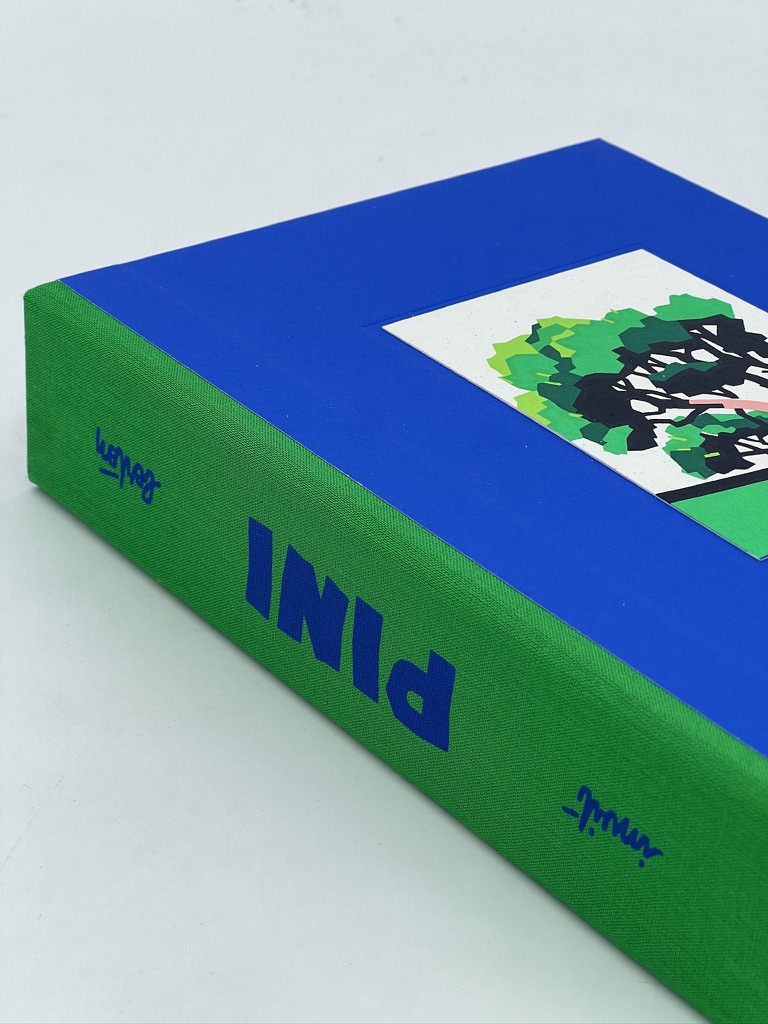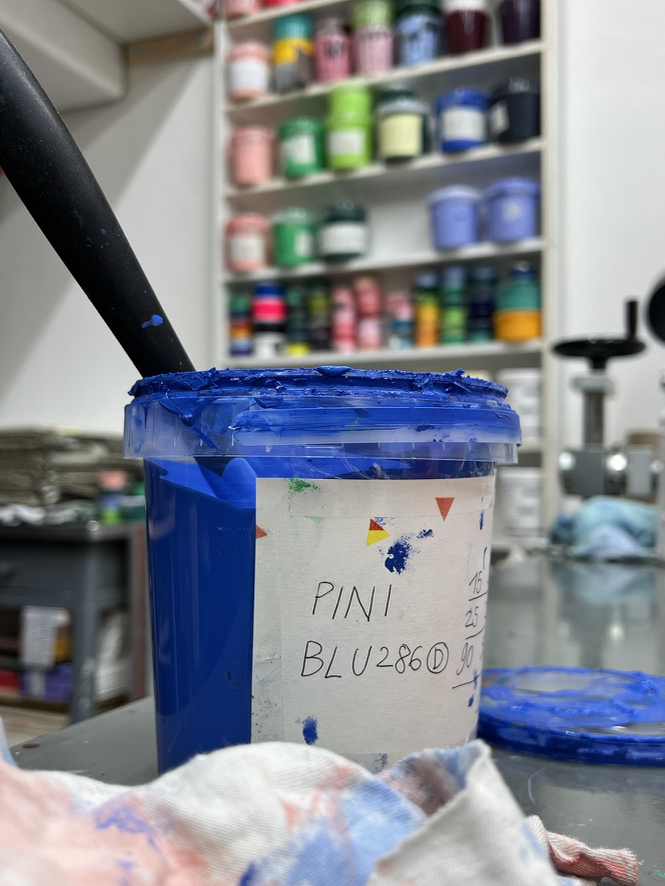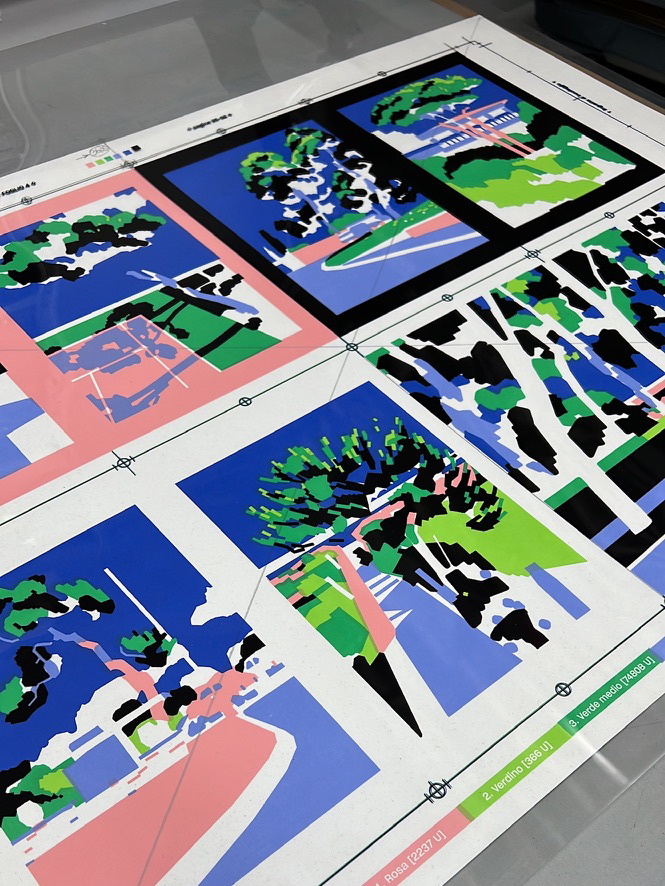PINI
BertonInuit Editions, April 2024
A screenprinted book in 7 colors on Favini Crush Mais 350,
40 pages, 6 meters long concertina, 3 variant covers
Limited edition of 70 per variant cover
PINI is an artist's book born from the collaboration between Matteo Berton and Stamperia Artistica Inuit.
This artistic project, developed over the past few years, has its roots in the twisted aesthetics of these trees. Chosen to stimulate an aestetic research on composition and color blocking, pine trees led the author to rediscover their presence in memory.
An introspective journey through the geometries of pine trees that stimulates reflection on the evocative power of nature and the role it plays in our memories.
Purchase available exclusively
on Inuit’s bookshoop HERE
This artistic project, developed over the past few years, has its roots in the twisted aesthetics of these trees. Chosen to stimulate an aestetic research on composition and color blocking, pine trees led the author to rediscover their presence in memory.
An introspective journey through the geometries of pine trees that stimulates reflection on the evocative power of nature and the role it plays in our memories.
Purchase available exclusively
on Inuit’s bookshoop HERE




This artist's book was created over a three-month period between January and April 2024 by Matteo Berton (author) and Inuit (printer).
It is the culmination of intense design and printing work that led to specific binding choices. We dedicated over a month to color research, using Pantone recipes as a base to get as close as possible to the digital version. Each of the seven final colors was obtained from dozens of tests, adjusting the ingredients in small increments to achieve the perfect shade.
Serigraphy is a handcrafted printing process that transfers a design imprinted on a fabric matrix onto paper. Unlike digital printing, the image's colors are printed one at a time, making it a time-consuming process.
It is the culmination of intense design and printing work that led to specific binding choices. We dedicated over a month to color research, using Pantone recipes as a base to get as close as possible to the digital version. Each of the seven final colors was obtained from dozens of tests, adjusting the ingredients in small increments to achieve the perfect shade.
Serigraphy is a handcrafted printing process that transfers a design imprinted on a fabric matrix onto paper. Unlike digital printing, the image's colors are printed one at a time, making it a time-consuming process.
The design must be broken down into layers, which are then photographically transferred one by one onto serigraphic screens.
Once the first screen is mounted on the bench, the color is manually spread using a squeegee, a special spatula, and this process is repeated until the last sheet. At the end of the first run, the second screen is mounted, and the process is repeated until the last color is applied.
This was done for each color of each of the 5 sheets that make up our book. 35 frames, each receiving more than 200 squeegee strokes. The printing phase, which also includes washing, impression, rinsing, and registering the screen, kept us frenetically busy for over a month and a half.
Once the first screen is mounted on the bench, the color is manually spread using a squeegee, a special spatula, and this process is repeated until the last sheet. At the end of the first run, the second screen is mounted, and the process is repeated until the last color is applied.
This was done for each color of each of the 5 sheets that make up our book. 35 frames, each receiving more than 200 squeegee strokes. The printing phase, which also includes washing, impression, rinsing, and registering the screen, kept us frenetically busy for over a month and a half.
In the meantime, we took care of the binding. Searching among bookbinding material suppliers, we found spine cloths that were consistent with our color palette. We printed the endpapers and covers and impressed the central rectangle with a magnesium cliché. Finally, the pages were corded, folded, and glued together to create a concertina (or leporello) of more than six meters that closes thanks to magnetic sheets.
In short, a handcrafted work that demonstrates how the creative process extends beyond the drawing of the Pini and into the printing phase, where drawing and printing intertwine inseparably.
In short, a handcrafted work that demonstrates how the creative process extends beyond the drawing of the Pini and into the printing phase, where drawing and printing intertwine inseparably.















